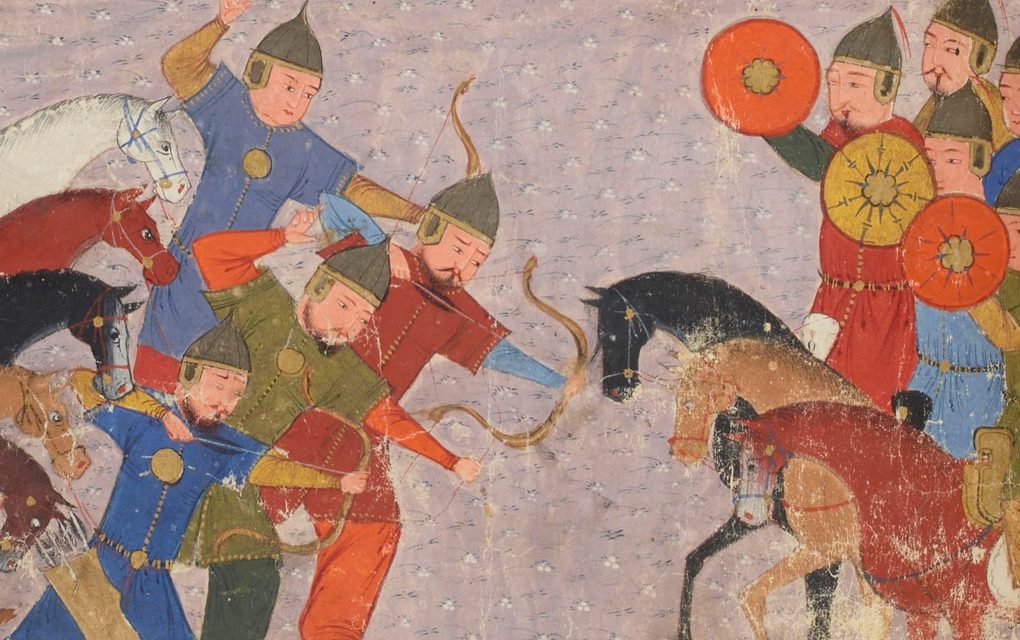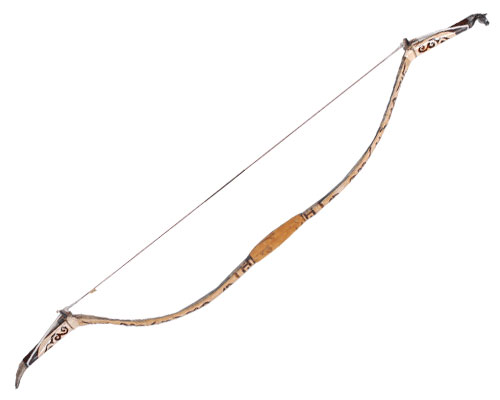I’ve always loved traditional archery, especially the unique designs of ancient bows. The Mongolian and Manchu bows stand out, each telling a story from their cultures.
Deciding between the Mongol bow and the Manchu bow involves looking at their histories and features. This is not just about how they are made or perform.
It’s also about what they reveal about Mongol and Manchu civilizations. Whether you love archery or history, let’s explore what makes these bows different.
Who Were The Mongols & Manchus

The Mongols, from North Eastern Asia, rose to fame with Genghis Khan’s leadership. They were known for their horse riding skills, the powerful Mongol bow, hit-and-run Parthian tactics, and for creating one of the largest empires.

On the other hand, the Manchus came from the cold, forested lands of Manchuria in northeast China, they are related to the semi-nomadic tribes of the Jurchens.
They formed the Qing Dynasty, China’s last imperial dynasty. Unlike the Mongols, the Manchus focused on a strong government and administration.
The Mongols and the Manchus had unique journeys influenced by where they lived, their cultures, and history. Their society and fighting methods set them apart, just like their archery gear does.
They were both nomadic types of people that ended up forming one of the largest empires in Asia whilst having a very small population.
What is a Mongolian Composite Bow?

The Mongolian composite bow is a marvel of ancient archery. It is made of wood, horn, and sinew. This bow has a special recurve shape. It boosts power and helps shoot arrows accurately. The materials are glued together with strong animal-based glues. This makes the bow strong and durable.
Read: How is Mongolian Bow Made
I learned a lot about traditional archery. The Mongolian composite bow is both strong and flexible. Its recurved shape lets archers shoot arrows fast without much effort. This shape also makes the bow easy to carry. It was perfect for Mongolia’s horse archers who needed to move fast.
- Layers of natural materials ensuring durability and flexibility
- Optimized recurved design enhancing power and accuracy
- Ideal for the practiced skill of horseback archery

The Mongolian composite bow was very important in Mongol history. It was used by skilled horse archers. These archers were fast and deadly. They were masters at using the bow. This weapon is a symbol of their culture and military skill.
What is a Manchu Qing Bow?

The Manchu Qing Bow is famous among archery fans and history buffs. It’s a key symbol of Manchurian culture and its impact on military evolution. As a type of composite reflex bow, it’s related to the Mongolian bow. Yet, it stands out because of unique features that made it pivotal in the Qing Dynasty’s military.
Its big siyahs are not just for show. They help the bow pull back further. These bows could also shoot heavier arrows. This meant they could hit harder, especially against heavily armored enemies.
- The bow’s long draw length gave fighters a power advantage.
- Its ability to shoot heavy arrows made it deadly in combat.
Mongol vs Manchu Bow Similarities
Even though mongol bow design and manchu bow design are unique, they share a common background. This similarity covers their designs, materials, and historical uses.
| Mongol Bow | Manchu Bow |
|---|---|
| Recurved composite design | Composite reflex design with large siyahs |
| Made from wood, horn, and sinew | Made from wood, horn, and sinew |
| Instrumental in Mongol Empire’s military campaigns | Symbolic of Qing Dynasty’s military prowess |
Bow Design
Looking closely, you can see how Mongol and Manchu bows look alike with a recurve design. They are made from a mix of materials that enhance performance. These designs served a common goal – to shoot powerfully from horseback.
Bow Material
The mongol bow material and manchu bow material showcase expert craftsmanship. Wood, horn, and sinew are combined skillfully. The bows are strong, flexible, and accurate, thanks to these materials.
History & Origins
The histories of mongol bow history and manchu bow history share similar connections in Asian history. Derived from old Turkic and Mongolic people more than 3000 years ago, from the Scythian bow to the Hun bow, they borrowed a lot of the elements from them.
Manchu Bow and Mongol Bow Differences
Comparing Manchu and Mongol bows involves looking at elements like manchu bow draw weight, mongol bow draw weight, and sizes. It’s also key to consider how each one works from horseback and the arrow power they bring.
Draw Weight, Size & Horseback Use
The manchu bow draw weight is much higher than the mongol bow draw weight. This means the Manchu bow has a longer range but requires more strength to use. The Mongol bow is easier to handle on horseback due to its lighter weight and smaller size. Here’s a table showing these differences:
| Characteristic | Manchu Bow | Mongol Bow |
|---|---|---|
| Draw Weight | Higher | Lighter |
| Physical Size | Larger | Smaller |
| Maneuverability on Horseback | Less Maneuverable | More Maneuverable |
| Preferred Use | Short-Distance Shooting | Long-Range Shooting |
Arrow Penetration Power
The manchu bow arrow penetration power stands out for its ability to pierce armor, thanks to its high draw weight. This makes it ideal for close combat and foot soldiers more so often used the Manchu Bow.
Meanwhile, the mongol bow was used for hit and run tactics on horseback. While Mongols bows are powerful and almost on par with English longbows, it didn’t have the same level of penetration power as Manchu bows.
Final Thoughts. Which Bow is Better?
Choosing between the mongol bow vs manchu bow depends on the archer’s needs. Each bow has unique features that cater to different styles. Think about what matters most to you in archery.
- The Mongolian bow is great for long shots and moving fast, especially on horseback. It’s lighter and easy to handle.
- If you want power and accuracy in close ranges, pick the Manchu bow. Its heavy draw and large siyahs are perfect for that.
Where To Get These Bows?
If you love archery, finding the best place for a mongol bow purchase or a manchu bow purchase is exciting. You can start looking at local archery stores or online shops. You’ll find that some sellers have authentic replicas for collectors. Others offer custom-made bows for those who want something unique.
You can also try our online shop and browse through our catalog if you are interested: https://silkroadbows.com/bows/
Do The Manchus and Mongols Still Exist?

The Mongol and Manchu empires left a lasting mark on history. The descendants of these powerful groups still live today, preserving their heritage. In Mongolia, the Khalkha Mongols continue to embody their ancestors’ nomadic lifestyle and spirit.
They are seen as the main representatives of mongol ethnicity. Their unique traditions and language set them apart in our modern world.
In northeastern China, the Manchus’ legacy lives on. Despite becoming part of China’s melting pot, they are recognized as one of 56 ethnic groups by the government.
They blend their ancient customs with Chinese culture, maintaining their identity. Particular festivals and the Manchu language keep the manchu ethnicity vibrant.
